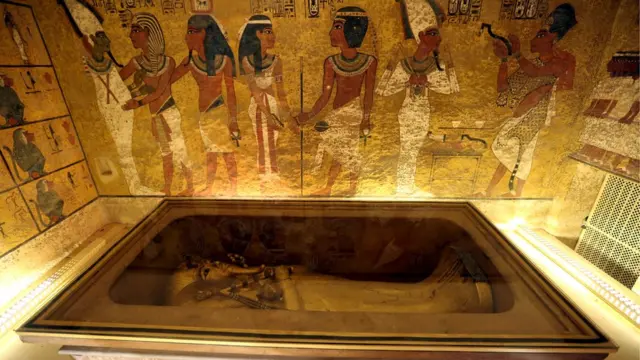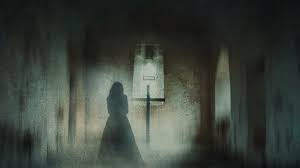Deep in Egyptian history and culture lies an ancient curse that has captivated the world for centuries: The Curse of King Tutankhamun. This fascinating tale of mystery and misfortune has captured the imagination of many, marking a turning point in the world of archaeology.
In the following content, we will dive into the intriguing story behind this curse. We will explore the details surrounding the pharaoh's tomb, the series of unexplained events that followed its discovery, and how these occurrences have impacted the world of archaeology. 👑💀
In addition, we will address the scientific and paranormal theories that have arisen around the curse of Tutankhamun. We will examine whether this curse is merely a superstition, or whether there is truly a link between the misfortunes suffered by those who disturbed the young pharaoh's sleep and the act of his desecration itself. 🏺🔍
Finally, we will discuss how this curse has influenced perception and methodology in archaeology, and how it has modified research and excavation strategies in the field. This journey through time and mystery promises to be both fascinating and educational. Get ready to discover the secrets of ancient Egypt and its influence on the modern world! 📜🌍

The Curse of King Tutankhamun
The story of King Tut's Curse has fascinated the world for over a century. Although many believe it to be just a legend, it is important to understand its origin and how it has influenced archaeology.
Tutankhamun was an Egyptian pharaoh who reigned during the 14th century BC. Although his reign was short and he died at an early age, Tutankhamun became one of the most famous figures of antiquity after the discovery of his intact tomb in 1922 by British archaeologist Howard Carter.
The Discovery of the Tomb
Carter and his team of archaeologists found Tutankhamun’s tomb in the Valley of the Kings, a site that housed the tombs of the pharaohs of Egypt’s New Kingdom. It was a remarkable find, as most royal tombs had been looted in ancient times. Tutankhamun’s tomb, however, remained intact, filled with priceless treasures and artifacts that offered unprecedented insight into the life and death of an Egyptian pharaoh.
The discovery was immediately followed by rumours of a curse protecting the tomb. These beliefs were reinforced by a series of disturbing deaths surrounding those associated with the discovery of the tomb.
The Curse in Detail
The curse is said to have been uttered by Tutankhamun himself to protect his tomb from intruders. The inscription at the entrance to the tomb, which read: “Death will strike with its fear he who disturbs the Pharaoh’s rest,” fueled beliefs in a curse.
Within months of the discovery, several members of Carter's team and others associated with the excavation died under mysterious circumstances. Most notably, Lord Carnarvon, the financier of the expedition, died of an infected mosquito bite shortly after visiting the tomb.
Impact on Archaeology
King Tutankhamun's curse had a significant impact on archaeology. The story captured the public's imagination and generated renewed interest in Egyptology. Furthermore, concerns about curses led archaeologists to take extra precautions when dealing with human remains and burial sites.
Scientific Skepticism and Popular Beliefs
Most modern scientists and archaeologists dismiss the curse as coincidence or superstition. However, the concept of a curse has endured in popular culture. The public's fascination with curses and mystery continues to be an integral part of the history of archaeology and of King Tut's mysterious tomb.
The Curse in Popular Culture
King Tutankhamun's curse has been a popular subject in books, films and television shows, reinforcing its place in the collective imagination. The story of the curse and the mysteries surrounding it have contributed to the worldwide fascination with ancient Egypt and its history.
Despite advances in archaeology and science, King Tut's curse remains an intriguing mystery that fascinates experts and amateurs alike. Ultimately, the story of the curse reinforces the allure of archaeology and the seduction of the unknown.
Conclusion
In conclusion, the legend of King Tutankhamun’s curse has left an indelible mark on archaeology and popular culture. This fascinating story, dating back to the early 20th century, has influenced the way we approach the exploration of burial sites and has increased interest in Egyptology. Even though modern scientists and archaeologists dismiss the curse as superstition, the belief persists, fueled by the mysterious circumstances surrounding those linked to the discovery of Tutankhamun’s tomb.
The curse of King Tutankhamun has also left its mark on popular culture, appearing in books, films and television shows, and contributing to the worldwide fascination with ancient Egypt and its history. The mystery surrounding the curse, real or imagined, continues to be a central component of archaeology’s appeal, proving that sometimes the unknown can be as intriguing as the discovered. The story of King Tutankhamun’s curse remains a source of fascination, an enigma that draws experts and amateurs alike. Ultimately, the curse of King Tutankhamun is a vivid reminder of the enduring power of myths and legends, and their ability to captivate our imaginations over time.



